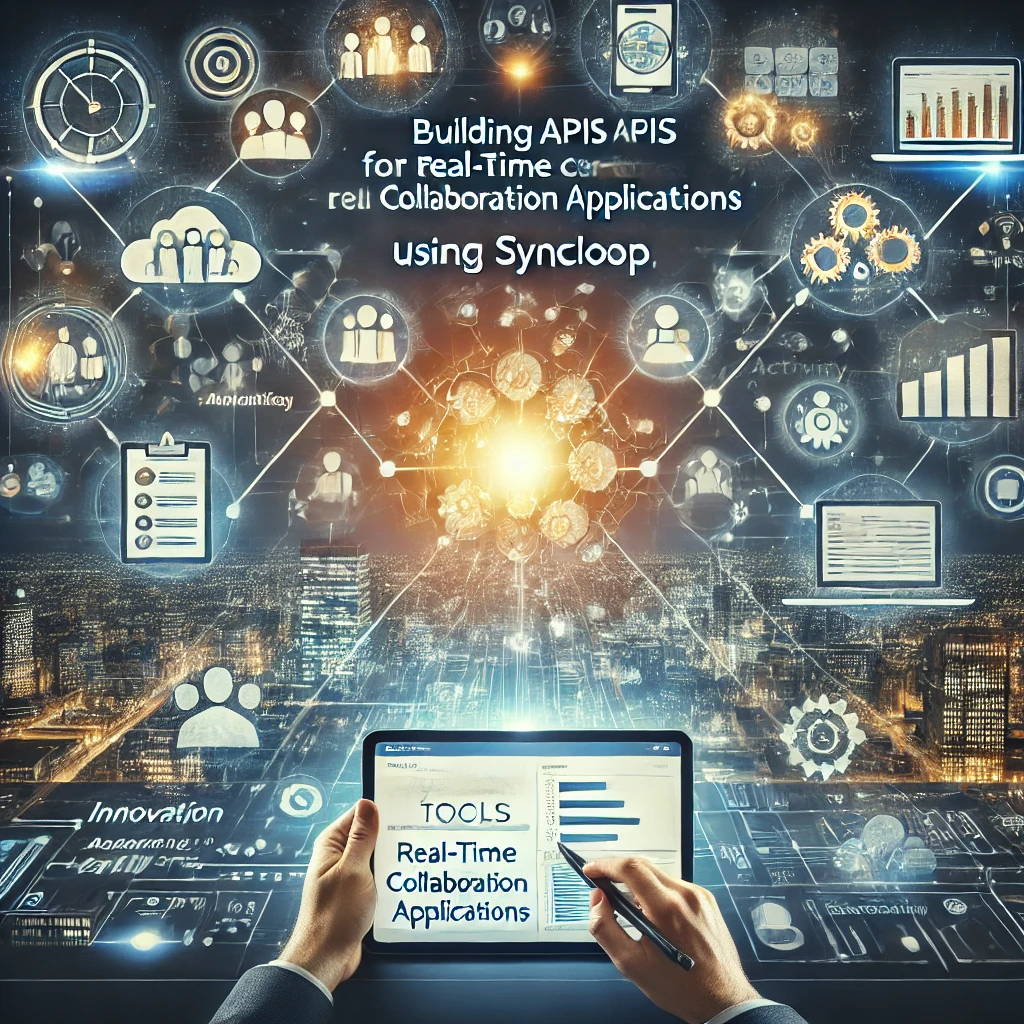Building APIs for Real-Time Collaboration Applications Using Syncloop

Syncloop provides a robust platform for developing APIs tailored to real-time collaboration, offering tools for low-latency communication, data synchronization, and workflow automation. This blog explores how Syncloop empowers developers to build scalable, efficient, and secure APIs for real-time collaboration.
Key Features of Real-Time Collaboration APIs
- Instant Updates: Synchronize changes across users and devices in real time.
- Bidirectional Communication: Enable seamless interactions between clients and servers.
- Scalability: Support growing user bases and concurrent sessions efficiently.
- Security: Protect sensitive collaboration data with robust authentication and encryption.
- Customizability: Adapt to diverse application needs, from messaging to document editing.
How Syncloop Simplifies Real-Time Collaboration API Development
1. WebSocket Support
- Enable low-latency, bidirectional communication for real-time interactions between users.
2. Data Synchronization
- Use Syncloop’s synchronization tools to ensure consistent data updates across clients and devices.
3. Dynamic Routing
- Route requests dynamically based on user actions, roles, or geographic locations to optimize performance.
4. Event-Driven Workflows
- Trigger actions like notifications, updates, or database changes automatically based on events.
5. Monitoring and Analytics
- Track API performance, session metrics, and usage patterns with real-time dashboards.
6. Authentication and Authorization
- Implement secure access control with OAuth 2.0, role-based permissions, and encrypted communication.
7. Scalable Infrastructure
- Use Syncloop’s auto-scaling capabilities to manage increasing workloads and user demands.
Benefits of Using Syncloop for Real-Time Collaboration APIs
1. Enhanced User Experience
Deliver fast, reliable, and seamless interactions across devices and platforms.
2. Simplified Development
Accelerate API creation with Syncloop’s low-code tools and prebuilt components.
3. Improved Scalability
Handle high traffic and concurrent sessions with Syncloop’s scalable architecture.
4. Robust Security
Protect collaboration sessions and user data with encryption and access controls.
5. Actionable Insights
Optimize performance and identify issues using Syncloop’s monitoring and analytics tools.
Real-World Applications of Syncloop in Real-Time Collaboration
1. Collaborative Editing Tools
- Support live updates for document, spreadsheet, and presentation editing applications.
2. Team Messaging Platforms
- Enable instant messaging, file sharing, and real-time notifications for teams.
3. Virtual Classrooms
- Power live discussions, quizzes, and group activities in online learning environments.
4. Project Management Software
- Synchronize task updates, progress tracking, and team communication in real time.
5. Multiplayer Gaming
- Facilitate synchronized gameplay, chat, and interactions for online gaming platforms.
Steps to Build Real-Time Collaboration APIs with Syncloop
Step 1: Define Collaboration Requirements
- Identify key features like messaging, data synchronization, or role-based permissions.
Step 2: Set Up WebSocket APIs
- Use Syncloop’s WebSocket capabilities for real-time communication and updates.
Step 3: Implement Data Synchronization
- Configure APIs to sync data changes across all clients instantly and accurately.
Step 4: Leverage Event-Driven Workflows
- Automate actions based on triggers like user interactions or data updates.
Step 5: Monitor and Optimize
- Track API performance with Syncloop’s analytics tools and refine workflows for better efficiency.
Step 6: Secure Your APIs
- Use Syncloop’s authentication and encryption tools to protect collaboration data and sessions.
Best Practices for Real-Time Collaboration APIs
- Prioritize Performance: Use WebSocket APIs to minimize latency and enhance responsiveness.
- Ensure Data Consistency: Implement synchronization mechanisms to maintain consistent states across users.
- Design for Scalability: Use auto-scaling and load balancing to handle peak traffic efficiently.
- Secure Communications: Protect data with robust encryption and role-based access control.
- Test Extensively: Validate real-time functionality under different conditions to ensure reliability.
- Monitor Continuously: Use analytics to track usage patterns and identify performance bottlenecks.
Conclusion
Building real-time collaboration APIs requires a focus on speed, reliability, and scalability. Syncloop simplifies this process with tools for WebSocket communication, data synchronization, and event-driven workflows, enabling developers to deliver exceptional real-time experiences.
Whether powering collaborative editing tools, virtual classrooms, or team messaging platforms, Syncloop provides the capabilities to create robust APIs that meet the demands of modern collaboration applications. Embrace Syncloop to unlock the full potential of real-time collaboration and deliver outstanding user experiences.
A conceptual visualization of real-time collaboration APIs powered by Syncloop, showcasing live synchronization, WebSocket communication, and scalable architecture.
Back to Blogs